A startling one in four Brits will experience a mental health problem in their lifetime. With workplace stress viewed as a major cause of mental health issues, a range of well being initiatives from healthy eating to exercise programmes are now the order of the day in most offices. But how have treatments changed in recent times? I went along to the Bethlem Museum of the Mind to find out.

Bethlem Museum of the Mind exhibition room
The origins of Bethlem Royal hospital
Bethlem Royal hospital was originally founded in 1247 and was the first institution in Europe to care exclusively for the mentally ill. The hospital was founded at Bishopsgate in the City of London before moving to Southwark in the 19th century and then onto its current location in Bromley in the 1930s. The term bedlam originates from Bethlem Hospital and is still used to this day to denote chaos or madness.
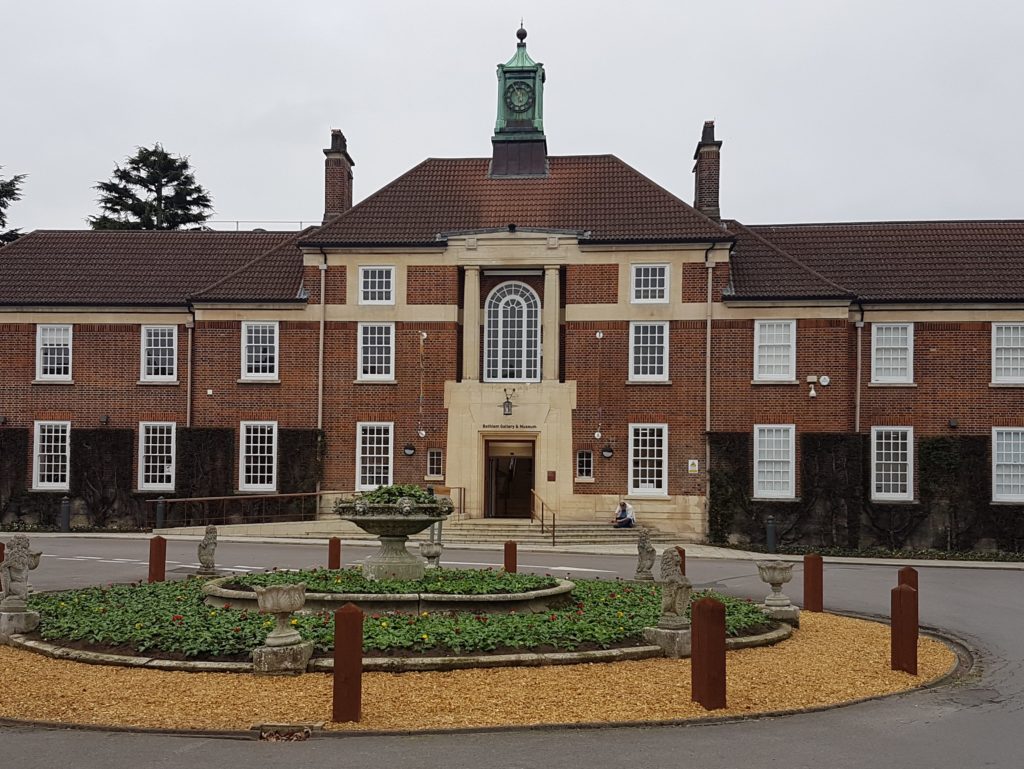
Bethlem Museum of the Mind exterior
The Museum of the Mind is part of the existing Bethlem Royal hospital complex and was opened to the public in 2015 to showcase an amazing collection of artefacts, archives and objects relating to mental health treatment through the ages.
Bethlem Museum of the Mind uncovered
On entering the Museum, two hulking brutes eye me with manic fascination. The Greek statues “Melancholia” and “Mania” are based on two of the four humours in Greek medicine and represent all that was known about mental health in the 17th century. Melancholia is the embodiment of depression while Mania represents madness and possibly violence. Both statues were initially placed on the gateposts to Bethlem Hospital and must have been quite a sight for new arrivals.
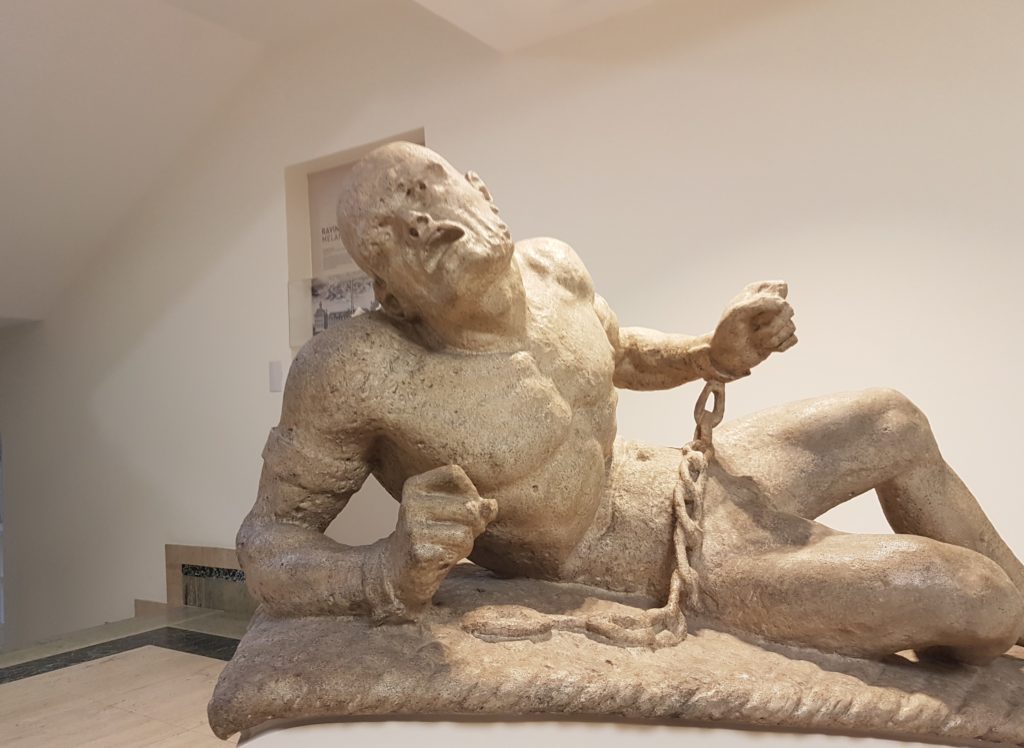
Mania sculpture at the Bethlem Museum of the Mind
Also, on the ground floor, there is also an interesting art gallery which contains paintings, sculptures and photographs from artists who have used the hospital to inspire their works, some of whom have drawn on their own experience of the mental healthcare system.
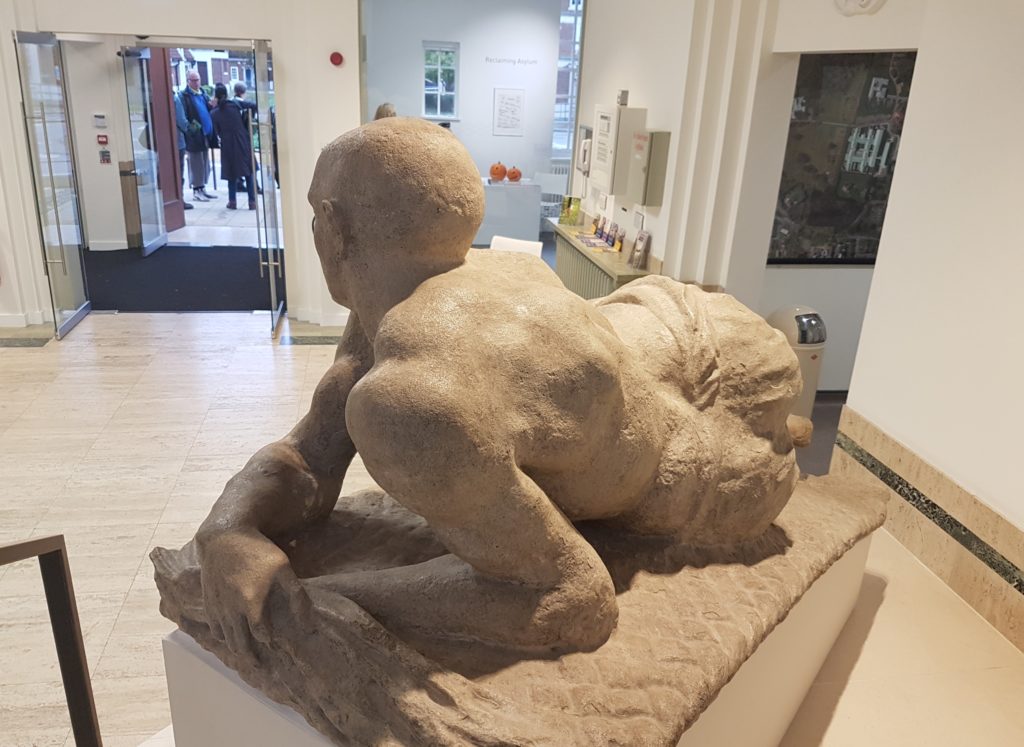
Melancholia statue at Bethlem Museum of the Mind
Avoiding the stare of the grimacing statues, I head upstairs to the main exhibition rooms which provides a fascinating mix of historic and contemporary artefacts, narrations and videos to chart the history of mental health treatment. Grandfather clocks, letters and apothecary bottles jostle for attention with state-of-the-art plasma screens and wall-to-wall videos.
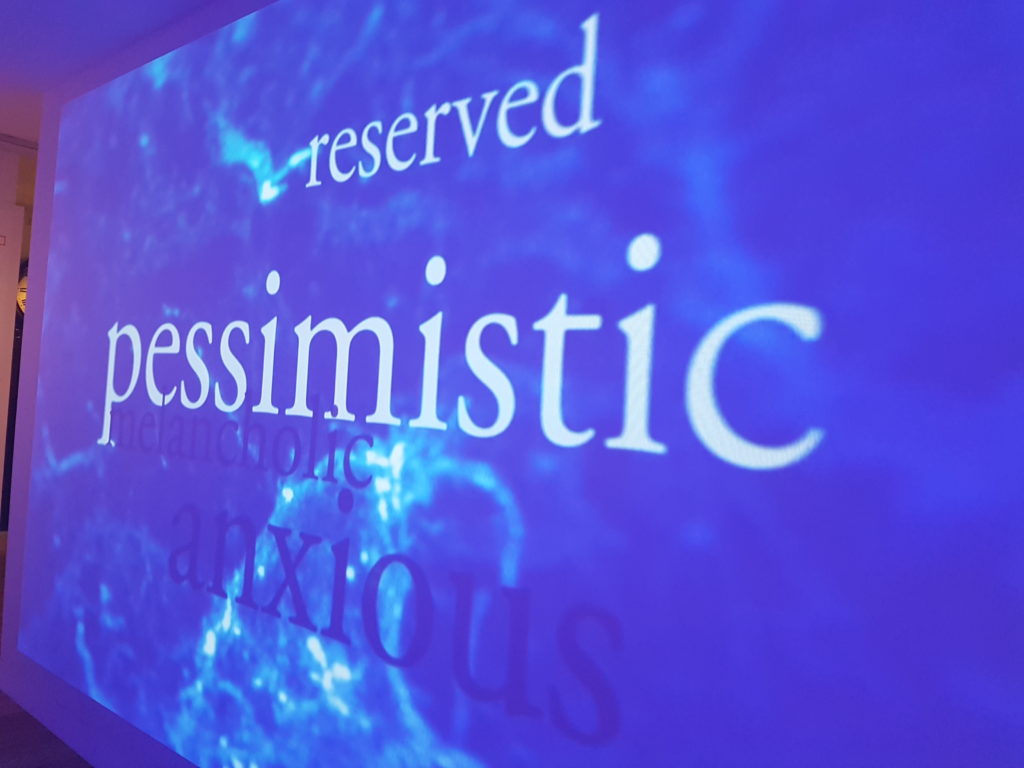
display screen at Bethlem Museum of the Mind
The history of mental health treatment
The exhibition covers a lot of unsettling ground from the physical restraint devices which were used in asylums up until 1815 through to the controversial electric shock therapy treatments which are still widely used today. Opening up debate is what the exhibition does best and video case studies force you to face difficult moral and ethical dilemmas. Should people be incarcerated against their will for their higher good? I’m glad such decisions are not down to me. True life experiences are narrated through headphones and videos – “telling the many stories within each life.”
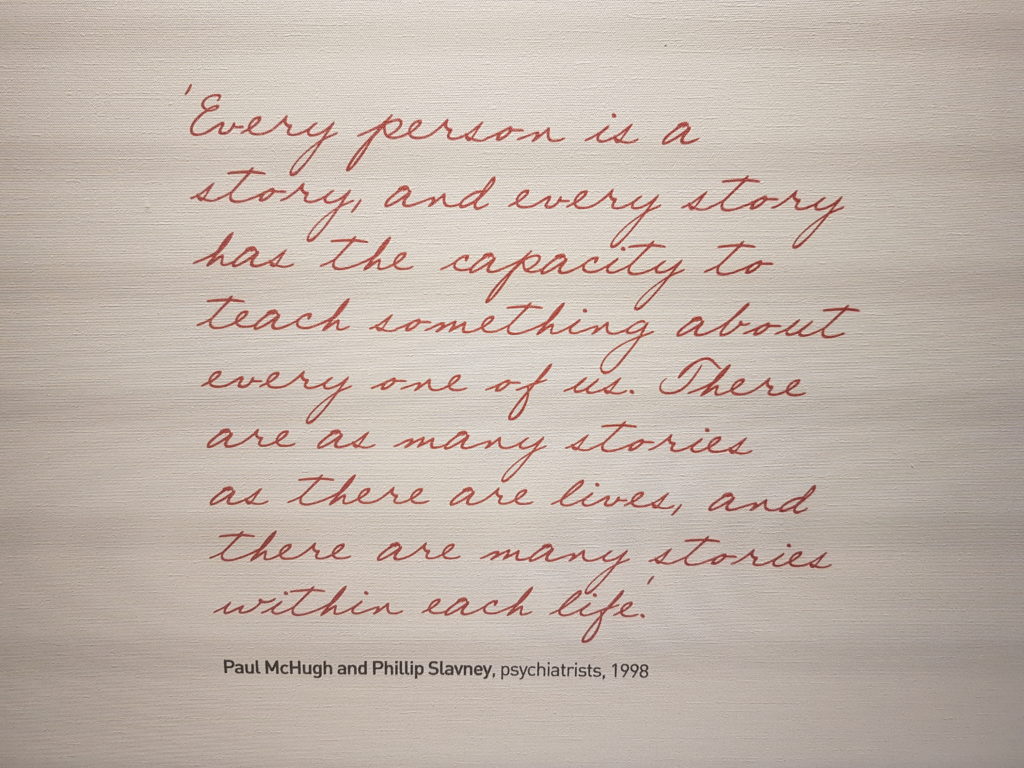
recorded letter at Bethlem Musem of the Mind
The exhibition also contains many artworks which hint at the link between creativity and madness. One of the most striking works are the kaleidoscope cats painted by Louis Wain when he was a Bethlem patient in the 1920s. The Museum will be featuring an exhibition of his works in the coming months.
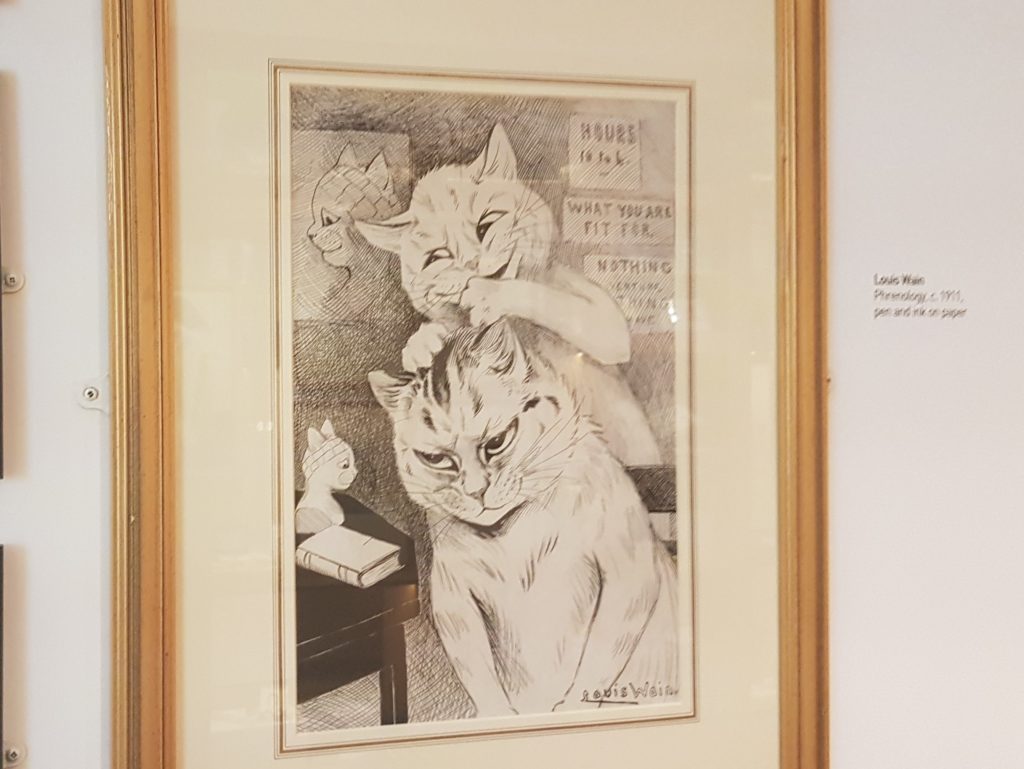
Picture of Kaleidoscope cats by Louis Wain
One of the most fascinating artefacts is the inkblot test. Resembling a beautiful flock of butterflies, the personality test devised by psychiatrist Herman Rorschah was widely used until the 1960s. Patients were asked to describe what they saw and the answers were thought to provide insights into their minds.
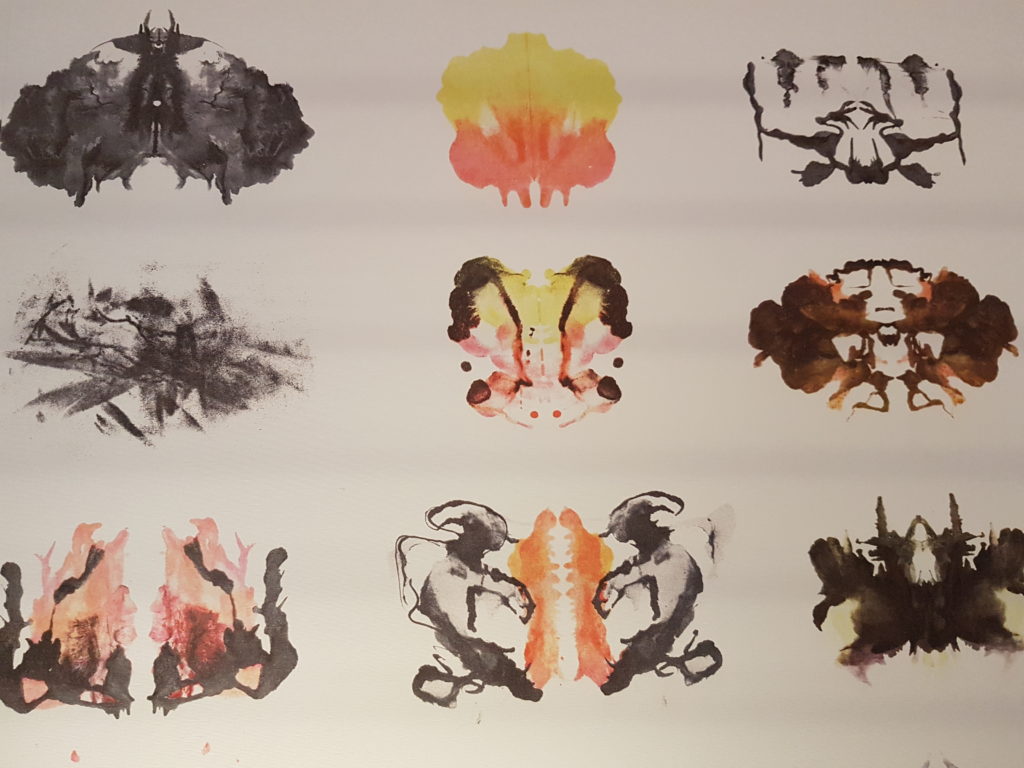
Ink blot test at Bethlem Museum of the Mind
A visit to the Museum is a fascinating and thought-provoking experience which does a brilliant job in breaking down the stigma associated with mental health problems.
For more information on Bethlem Museum of the Mind, visit: http://www.museumofthemind.org.uk
